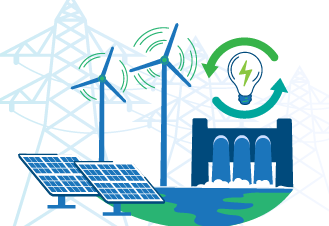
- Cross-border data transfers and renewable energy. Data transfers facilitate better siting, design, and wind and sun tracking in wind and solar technologies. Cloud- and satellite-enabled 3D mapping software can optimize siting decisions based on location, time zone, wind currents, sun path, and nearby weather station data. Cloud-enabled energy management software also helps reduce uncertainty in solar power forecasting, thus reducing the costs of integrating solar generation into the bulk power system.
- Cross-border Internet of Things (IoT) in natural resources extraction. Connecting sensors in remote oil fields or drilling platforms to cross-border cloud-enabled data centers can help increase carbon efficiency, operational safety, and environmental controls in natural resources extraction.
- Cross-border access to smart energy grids. Cross-border access to software-enabled smart grids for energy distribution helps reduce the carbon intensity of energy distribution while providing up to $2 trillion in customer benefits during the next 20 years. In smart grids, cloud-enabled software connects distributed data sources; forecasts energy demand as well as real-time wind and solar output; and makes it easier for utilities to adopt cleaner and greener energy sources. Smart grids also predict maintenance and repair needs, reducing downtime and blackouts.
- Cross-border data transfers and energy consumption. Data transfers can help reduce energy use in buildings, transportation assets, and other infrastructure. For example, buildings currently use almost 40 percent of all energy, 70 percent of electricity, and account for 30 percent of greenhouse gas emissions. Cross-border data analytics and cloud-enabled access to Building Information Management (BIM) software can help design buildings in ways to use less energy, while cloud-enabled Building Energy Management systems (BEMS) help control smart thermostats and lighting, reducing commercial building energy usage by 10 percent, which globally would amount to 65 petawatt hours of energy saved by 2040 (an amount equal to the total energy consumed in non-OECD countries in 2015).
